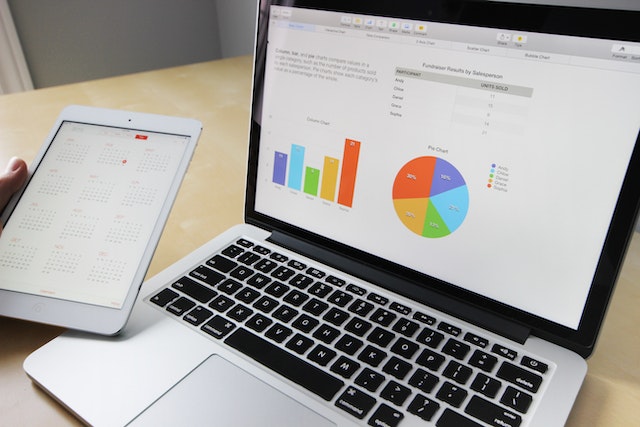Since LinkedIn is geared for businesspeople, its users typically discuss professional matters there. Anything from finding the perfect candidate for an open position to learning about the latest developments in the sector could fall under this category.
LinkedIn is the largest social network for professionals and businesses, with over 660 million users in over 220 countries. Since 2016, Microsoft has owned LinkedIn.
The most useful feature of LinkedIn Ads for companies is that it makes it simpler for them to achieve targeted business objectives through paid web advertising.
Users on LinkedIn are actively seeking answers to problems, so if you can help solve those problems while also being visible to them through ads, you’ll be in a prime position to offer your services.
The advantages and disadvantages of using LinkedIn ads as a platform are comparable to those of using Facebook ads for the same purpose and with the same level of precision. Ads on multiple websites may be the greatest strategy for your business, but this will depend on your specific objectives.
Explore your options for online marketing by reading up on paid social media strategies or organic search engine optimization.
LinkedIn Ads are an excellent way to boost your brand’s online exposure.
Marketing campaigns that focus on establishing a strong online brand are effective. Using LinkedIn Ads, you may establish your online professional brand as reliable and trustworthy.
If you want to have an online presence in the B2B sectors, Linkedin Ads should be a part of your marketing strategy.
Building a reliable, authoritative online brand can boost the performance of any advertising campaign.
If you know how to maximize your LinkedIn profile’s exposure, you can either save money on marketing or expand your advertising budget while still making a profit.
If you want more people to find your business and the material you’ve developed, having a presence on social media like LinkedIn is a must.
Improve your knowledge of SEO techniques.
Promoting Your Business On LinkedIn: A Kick-Off Ad Campaign
Campaigns on LinkedIn Ads can be used to advertise job openings, provide services and products, generate leads, promote content, expand a company’s online and offline presence, and even reach a new geographic market.
In order to help businesses reach a wider audience online, LinkedIn provides a variety of marketing options. The biggest advantage of using LinkedIn for advertising is that it allows you to specifically target working professionals in your field, unlike social media or search engines like Facebook or Google.
The B2C sector can take advantage of LinkedIn’s advertising platform by promoting job postings, sharing industry news, or highlighting product categories.
Using LinkedIn Ads to Generate Leads
LinkedIn’s strength is in its ability to generate B2B leads, which in turn may be used to boost sales and develop new connections.
Every company has the chance to get high-quality leads by focusing on the professional demographics that are a good fit for their target market.
Whether a marketing effort’s ultimate goal is increased sales, new hires, or brand awareness, LinkedIn ads may help acquire excellent leads at scale.
Use Lead Generation Forms to Get More High-Quality Leads
More leads can be generated from advertising if a conversion campaign and lead gen forms are used.
LinkedIn’s advertising options, including sponsored content and messaging adverts, can be paired with pre-filled forms for lead generation.
Your lead generation initiatives will have higher conversion rates thanks to the utilization of lead gen forms. A huge volume of high-quality leads can be generated using lead gen forms, and these leads can then be handled using a customer relationship management system or marketing automation software.
You can use a lead gen form to drive visitors to a website where they can download a white paper, or you can use it to thank them for submitting an inquiry. Download rates and other data could be recorded independently from these events.
Conversion campaigns that employ pre-filled forms may have an advantage over those that direct users to the main website’s form, but either option is worthwhile.
Ad Retargeting on LinkedIn
LinkedIn allows you to narrow your audience down based on their job title, region, industry, education level, and more. By far, the most useful feature of LinkedIn targeting is the fact that it provides a fresh perspective on online advertising by focusing on the professional sector.
Advertising to targeted, high-quality consumers online isn’t always easy.
Get your message out to an adult audience that is well-off since it is older, better educated, and has more disposable income. Targeting by occupation, job title, and other similar factors provides businesses with granular control over reaching the ideal customers.
With a thorough understanding of your clientele and a well-developed buyer persona drawn from the target demographic, you can put this information to good use in your LinkedIn ads.
By narrowing your advertising to a target demographic, you can increase your return on investment.
To speed up the process of identifying and targeting your ideal customers with your LinkedIn ads, you may use premade audience templates.
Targeting is most effective when it begins with a well-defined goal, and then it is narrowed down from there without being too specific. Campaigns with narrower focuses will not only reach fewer people, but may also perform worse because there won’t be enough data to optimize the strategy.
Audience characteristics and industries to focus on:
Type of Work
Seniority
Company Title
Size of Business
Industry
Skills
Styles of Degrees
Collective and private concerns
Ideal for B2B web advertising, but even B2C organizations might benefit from LinkedIn’s targeting possibilities if they’ve discovered that a particular buyer persona accurately describes their ideal customers.
Explore Various Audiences And Targeting Choices
You will need to conduct some experimentation to determine which combinations of targeting options and target audiences are most effective for your specific goals and campaigns.
To determine which targeting alternatives are optimal for achieving the desired outcomes, begin by running two identical campaigns but varying only the targeting. Continue to optimize results by comparing new, potential targeting variables with established frontrunners.
You can expand your campaign’s reach, impressions, and outcomes by testing different audiences. In the long run, your company may benefit much from gaining access to a favorable audience.
Targeting Similar Groups And Individuals
Ads can be shown just to people who are likely to be interested in them thanks to audience matching. Using similar audiences helps boost your business’s conversion and click-through rates. With proper audience matching, you can use the information you already have to create effective retargeting advertisements based on your stated goals.
Audiences can be matched by using:
Customer Segmentation
Account-based marketing campaigns can be tailored to specific decision-makers by uploading a CSV of company names.
Site-to-Site Retargeting
Re-engaging visitors who have already interacted with your website can help boost sales.
Reaching Out
Lead and prospect nurturing is simplified when a CSV file containing your contacts’ email addresses is uploaded.
By using custom targeting in conjunction with audience expansion or by creating lookalike audiences, you can locate people who have characteristics with your ideal clientele. You can start expanding your reach and improving your outcomes with better data once you experiment with unique targeting choices and lookalike audiences.
Variations on LinkedIn Ads
You can use any of LinkedIn’s supported ad types in your campaigns. One of the most important aspects of creating a successful LinkedIn Ads campaign is selecting the optimal ad format for each objective.
No matter what permutations of ad types prove to be the most fruitful for you, always bear in mind:
Explicit prompts to take action
Harmonizing content with audience
Successful advertising for your company
Give people a good incentive to read or click on your content by providing something of value and high quality.
Variations in advertising formats are constantly being tried out.
Ratios of conversion should be monitored and improved.
The following are examples of LinkedIn advertisements that businesses can use to promote themselves.
Promoted Posts
Promoted posts in LinkedIn feeds are contextually relevant and integrated into the user experience.
Sponsored content ads, like those on Facebook, appear in users’ news feeds and are labeled as such.
Advertisements appear on all screens.
The best area to get your advertising seen by the most people is in sponsored content, therefore that’s where you should focus first when developing your campaigns.
Advertisement integration works well for:
Sharing promotional content
Used for Making Proclamations
Taking in User Input
Lead generation
Advertising a LinkedIn Profile
Carousel advertising, video commercials, and single image posts are all acceptable formats for sponsored content.
LinkedIn users are more likely to consume long-form content, making it a good fit for the ad format.
Display Ads on LinkedIn’s Messages
Directly in the LinkedIn messaging inboxes of your target audience is where you’ll find Message Ads. There are no restrictions on where or how this advertisement is displayed.
Since consumers receive Message Ads in their inbox, they feel like they’re getting more tailored content. With appropriate ad copy, the tailored messages will enhance ad engagement, which in turn increases the likelihood of a conversion or click.
In order to better serve users, messaging adverts alert them with a notification.
However, using message ads effectively does involve some forethought. When used correctly, message ads can be an efficient and effective kind of advertising, but they require narrowly defined demographics. Not everyone will respond positively to a generic message.
Get more done by sending a message that is easy to understand and that includes a direct call to action.
Text Ads on LinkedIn
LinkedIn’s text advertising are smaller banners that run alongside the main feed on desktop computers. There is a possibility that users won’t see the ads as clearly as they would with other formats, which could negatively impact their effectiveness.
Text advertisements can help expand your campaign’s reach and, when used in conjunction with a well-thought-out strategy, can even enhance conversions.
Online advertisements on LinkedIn that change in real time
LinkedIn’s dynamic advertising are automatically tailored to the interests of your target demographic.
Using dynamic advertisements, you can boost engagement with your business page and the reach of your organically shared content.
Like sponsored content articles, dynamic advertising can direct readers to a website or landing page where the advertiser’s goods and services can be perused in further detail.
There are four main purposes for deploying dynamic ads:
Using Ads with Followers to Reach New People
Promotional advertising that feature relevant information for the intended audience
Recruiting more potential candidates via job advertisements.
Ads that promote downloadable information in the hopes of generating leads.
A Rise in Linkedin Ad Spending
LinkedIn Elevate is an internal marketing solution that allows you to leverage your company’s workers to broaden your company’s reach and amplify your content marketing efforts.
LinkedIn Elevate makes it simple to broadcast articles that are tailored to the interests of individual workers. Key data, like as website traffic and leads, may be monitored as employees disseminate the content.
Budgeting For And The Price Of LinkedIn Ads
If you’re looking for an affordable and effective advertising solution for your business, look no further than LinkedIn.
There are a few different pricing structures for LinkedIn ads: pay-per-click (PPC), cost-per-thousand impressions (CPM), and cost-per-sent (CPS).
LinkedIn advertising budgets are used to control costs.
Linkedin’s Financial Plan
LinkedIn will expend the daily allotted budget for the campaign. Ideal for long-term initiatives.
Linkedin will use the entire allotted budget for a campaign. Ideal expenditure plan for focused marketing with strict monetary goals.
Bids can be set for various actions on LinkedIn, including clicks, impressions, and conversions, and LinkedIn will spend the amount you specify. This setting will not cause wasteful spending, but a too-low bid could have an effect on the outcome. The lack of data for optimization could also affect performance.
Overspending by up to 20% each day is allowed by budgets, but the long-term average will be zero.
When choosing a spending plan, it’s crucial to keep the campaign’s objectives in mind.
Conversion rates, number of views, and number of clicks are all measurable KPIs that can inform spending priorities. Choosing the best course of action can save you both time and money, but this will depend on your specific needs.
Identifying the objectives is the first order of business.
Additional LinkedIn Ad Expenses
Clicks and CPMs on LinkedIn are generally higher than those on other digital advertising platforms.
The fact that it caters to professionals in a professional atmosphere helps to justify the higher costs for some companies.
You can get the most bang for your buck from LinkedIn advertisements if you employ them after you’ve gathered more information about your target demographics.
Your campaigns and their profitability can be maximized by establishing appropriate goals to ensure that they are in line with your business’s objectives and that your return on advertising spend is consistent with other marketing techniques.
Costs and ROI need to be included in for the time and effort required to create and manage LinkedIn campaigns.
Advertising Metrics on LinkedIn
LinkedIn, like other ad platforms, provides data for its ad solutions to help you optimize your campaigns for maximum impact. By analyzing the results of your advertising campaigns, you may boost the effectiveness of all of your marketing efforts.
LinkedIn’s analytics will provide you a bird’s eye view of your ideal customer.
You can better serve your customers and grow your business if you dig into the motivations behind their interactions and purchases.
Use information to strengthen connections, create superior goods, generate interest in content marketing, and more.
Population Statistics for the LinkedIn Website
The LinkedIn Insight Tag allows you to see the demographic breakdown of your website’s visitors.
Targeted content marketing allows you to collect and analyze data from experts, giving you a leg up on the competition.
Occupational Labels
Job Experience
Brands and Organizations
the scale of the business
Industries
Country
You may better target your audience and develop material that matters to them by monitoring their behavior on various pages of your website and learning how various professions use your website.
In addition to learning about previously unknown professional audiences, you can use this information to fine-tune your LinkedIn advertising strategy.
Website demographics provide a good starting point for gathering audience information useful for LinkedIn ads.
You may increase your return on investment by advertising to certain demographics and finding out which pages they like the most.
Measurement Criteria for LinkedIn Ads
Campaign analytics are analyzed in order to improve LinkedIn Ad performance.
Important KPIs for Fine-Tuning Ad Campaign Results:
Clicks
Resulting Quantity of Clicks (CTR)
Standard participation
Reviews, Favorites, and Favorite Sharing
Conversions
Alternate Forms of Expressions
Leads
Average Cost Per New Lead
LinkedIn Ad Conversion Tracking
To set up conversion monitoring in the Campaign Manager for LinkedIn Ads, you must first install the Linkedin Insights Tag on your website.
Conversion tracking must be activated in LinkedIn advertising for advertisers to collect leads and other custom conversions like downloads, purchases, and signups.
When compared to advertising to comparable groups or keywords on other platforms, the conversion rates offered by LinkedIn are far higher.
Distribution of LinkedIn Ads
Statistics gathered by your campaigns may be viewed in the Demographics section of the Campaign Manager.
You may learn who has interacted with and viewed your ads by analyzing user demographics. The in-depth information can be used to strengthen content and targeting and improve ad testing.
Analytical Services from Outside Sources
It is essential to keep separate records of the online traffic you receive from your website and any other sources. The only way to know which campaigns are actually helping your organization is to isolate the relevant data.
Because of this, it’s crucial to keep track of LinkedIn Ads data independently.
If you’re not tracking user behavior on landing pages for your advertising campaigns, you’re missing out on a wealth of valuable insights. Google Analytics is a must-have for any website.
The effectiveness of your advertising campaigns can be improved by gaining an understanding of user activity data on your website.
Study up on the subject of web analytics.
Conclusion
The addition of LinkedIn Ads to a company’s online advertising strategy is a smart move. It’s a win-win situation for companies of all stripes who take advantage of LinkedIn’s full potential.
LinkedIn advertisements are the best way for businesses to get B2B leads and get their message in front of highly qualified industry professionals online.




